
 David went to considerable trouble to get these embroidered letters made for us, and here's what they look like when sewed onto a conductor's uniform. Just like the old days! My wife did the sewing, and it looks perfect.
David went to considerable trouble to get these embroidered letters made for us, and here's what they look like when sewed onto a conductor's uniform. Just like the old days! My wife did the sewing, and it looks perfect.News and views of progress at the Illinois Railway Museum

 David went to considerable trouble to get these embroidered letters made for us, and here's what they look like when sewed onto a conductor's uniform. Just like the old days! My wife did the sewing, and it looks perfect.
David went to considerable trouble to get these embroidered letters made for us, and here's what they look like when sewed onto a conductor's uniform. Just like the old days! My wife did the sewing, and it looks perfect.
Posted by
Randall Hicks
at
7:14 PM
5
comments
![]()
David Writes......
Posted by
David Wilkins
at
8:15 PM
2
comments
![]()
 And this is a metal plate for one of the side doors, which needed a coat of primer on the inside to keep it from rusting. The fresh paint makes a nice reflector for the incoming sunlight.
And this is a metal plate for one of the side doors, which needed a coat of primer on the inside to keep it from rusting. The fresh paint makes a nice reflector for the incoming sunlight. An electrical problem I wanted to address concerned the gauge lights on the 319. The gauge light uses a small low-voltage bulb wired into one of the interior light circuits, so it's in series with five 36W bulbs running on 600V. The wires from the socket run through the air, taped to the plumbing in a couple of places, and connect to the snap switch. The gauge bulb is turned off by shorting it out. At this end, at least, the insulation had started to crumble, so I needed to replace it with newer wires. After making the new connections, however, I still find that neither gauge light works on this car, although all the interior lights are lit. It's possible the gauges were disconnected, but I'd have to get up into the attic to check that out. In the meantime, we seldom run at night, so this won't impact operations. Both gauge lights work on the 36, and our other cars, though.
An electrical problem I wanted to address concerned the gauge lights on the 319. The gauge light uses a small low-voltage bulb wired into one of the interior light circuits, so it's in series with five 36W bulbs running on 600V. The wires from the socket run through the air, taped to the plumbing in a couple of places, and connect to the snap switch. The gauge bulb is turned off by shorting it out. At this end, at least, the insulation had started to crumble, so I needed to replace it with newer wires. After making the new connections, however, I still find that neither gauge light works on this car, although all the interior lights are lit. It's possible the gauges were disconnected, but I'd have to get up into the attic to check that out. In the meantime, we seldom run at night, so this won't impact operations. Both gauge lights work on the 36, and our other cars, though.
Posted by
Randall Hicks
at
3:35 PM
0
comments
![]()
Labels: 36 Progress
Posted by
Randall Hicks
at
9:52 PM
3
comments
![]()
 Instead, it'll be all business as usual, and all about the 36. I'm glad to report that the remote control projects are progressing nicely. On the train door, I decided to install the kick plate, which was already in primer, and then put a second coat of red on the outside. I would like to be able to put the door back on the car soon. Henry Vincent and his grandson have done a lot of good work on it.
Instead, it'll be all business as usual, and all about the 36. I'm glad to report that the remote control projects are progressing nicely. On the train door, I decided to install the kick plate, which was already in primer, and then put a second coat of red on the outside. I would like to be able to put the door back on the car soon. Henry Vincent and his grandson have done a lot of good work on it. And then Paul Cronin and Joel Ahrendt have been working on the defective grid box. Here we see some piles of defective grids, reusable grids, and replacement grids from stock. The rubber tire goes to something else, I hope. We really appreciate the help we're getting from the guys in the shop.
And then Paul Cronin and Joel Ahrendt have been working on the defective grid box. Here we see some piles of defective grids, reusable grids, and replacement grids from stock. The rubber tire goes to something else, I hope. We really appreciate the help we're getting from the guys in the shop. 
 While we're down here, let's look around. This is the brake cylinder, with the marking "6-57" plainly visible. That must have some mystic significance. In front of it is the tie rod. I might point out that the brake cylinder on this car is mounted such that it's remarkably hard to see from outside. When doing initial brake tests, it's good for the trainmen to be able to see the brake cylinder clearly, but on this car you have to know just where to look. Sorry!
While we're down here, let's look around. This is the brake cylinder, with the marking "6-57" plainly visible. That must have some mystic significance. In front of it is the tie rod. I might point out that the brake cylinder on this car is mounted such that it's remarkably hard to see from outside. When doing initial brake tests, it's good for the trainmen to be able to see the brake cylinder clearly, but on this car you have to know just where to look. Sorry!  So let's turn to some easier tasks. One of the next contactors in line for installation had an arc chute box that had come apart (L), but fortunately we have some spare arc chute assemblies ("bird houses") on hand. Replacing the arc chute was quick and easy -- THAT doesn't happen very often!
So let's turn to some easier tasks. One of the next contactors in line for installation had an arc chute box that had come apart (L), but fortunately we have some spare arc chute assemblies ("bird houses") on hand. Replacing the arc chute was quick and easy -- THAT doesn't happen very often!  In the #2 vestibule, where the train door is in the shop, here's the lettering above the door. If you look very closely, you may be able to see that there's an earlier version of "#2 END" below the later black on red lettering.
In the #2 vestibule, where the train door is in the shop, here's the lettering above the door. If you look very closely, you may be able to see that there's an earlier version of "#2 END" below the later black on red lettering.
Posted by
Randall Hicks
at
7:28 PM
3
comments
![]()
Labels: 36 Progress
Posted by
Frank Hicks
at
9:27 PM
0
comments
![]()
 Today was the annual Safety Meeting, among other things, and of course safety is of prime importance for our Museum. Since the four of us were there, we were able to have an in-person Hicks Car Works board meeting, which doesn't happen too often. (Photo by Zach - thanks! But maybe my camera needs to be fixed. That big white spot on Al's face is not actually there.) Lacking anything to argue about, we agreed to keep doing what we're doing. You'll notice we're all carefully clutching our rulebooks. Harold Krewer gave us some updates to the rules, spoke about various issues we need to be aware of, and Bob Opal instructed us how to fill out the new Hours of Service forms. Safety First! Of course, this may not mean much to those of you who don't operate trains at IRM. So let us advise you not to play with matches, don't run with scissors, don't smoke in bed....
Today was the annual Safety Meeting, among other things, and of course safety is of prime importance for our Museum. Since the four of us were there, we were able to have an in-person Hicks Car Works board meeting, which doesn't happen too often. (Photo by Zach - thanks! But maybe my camera needs to be fixed. That big white spot on Al's face is not actually there.) Lacking anything to argue about, we agreed to keep doing what we're doing. You'll notice we're all carefully clutching our rulebooks. Harold Krewer gave us some updates to the rules, spoke about various issues we need to be aware of, and Bob Opal instructed us how to fill out the new Hours of Service forms. Safety First! Of course, this may not mean much to those of you who don't operate trains at IRM. So let us advise you not to play with matches, don't run with scissors, don't smoke in bed.... I would normally go out to the Museum on Thursdays, but this week there was lots of flooding in the area, and my wife wanted me to stay home and keep an eye on the sump pump. So I finished up some cushions for the 319, among other things. Here they are, installed in the car.
I would normally go out to the Museum on Thursdays, but this week there was lots of flooding in the area, and my wife wanted me to stay home and keep an eye on the sump pump. So I finished up some cushions for the 319, among other things. Here they are, installed in the car.
 When the system was being disassembled at Cleveland, one of the set screws on contactor #7 broke off (yellow arrow). So rather than fix it, the cable was cut in two. After reinstalling the contactor, I stripped the cables, managed to realign them, and put the new crimp connector in place (white arrow). Max has a power crimp tool that will do the job, so I'll borrow from him next time I have a chance and finish connecting this contactor.
When the system was being disassembled at Cleveland, one of the set screws on contactor #7 broke off (yellow arrow). So rather than fix it, the cable was cut in two. After reinstalling the contactor, I stripped the cables, managed to realign them, and put the new crimp connector in place (white arrow). Max has a power crimp tool that will do the job, so I'll borrow from him next time I have a chance and finish connecting this contactor.
Posted by
Randall Hicks
at
7:52 PM
0
comments
![]()
Labels: 36 Progress
Posted by
Randall Hicks
at
8:58 PM
1 comments
![]()
Labels: IRMA
Posted by
Frank Hicks
at
5:11 PM
0
comments
![]()
Labels: Steam
Posted by
Frank Hicks
at
1:01 PM
7
comments
![]()
While Randy wrestled with grids all day, this is what I contended with down in St. Louis at the Museum of Transportation. Note, the pole isn't supposed to be like that, nor is the catcher supposed to be on the ground.
Posted by
David Wilkins
at
8:50 PM
6
comments
![]()
 So if you want to do any painting, the shop is the place to be. A first coat of finish red on the 36's train door seemed like a good place to start. Red is always a relatively transparent color, so this first coat is only a start. But it would be nice to be able to install this door sometime soon, and I really appreciate all the work Henry and Jonathan have been doing on it.
So if you want to do any painting, the shop is the place to be. A first coat of finish red on the 36's train door seemed like a good place to start. Red is always a relatively transparent color, so this first coat is only a start. But it would be nice to be able to install this door sometime soon, and I really appreciate all the work Henry and Jonathan have been doing on it. I discussed the grid box issue with Bob Kutella, and so the worst of the boxes was brought to the shop. Paul volunteered to start work on it. He put penetrating oil on the various parts that will need to be disassembled, so that's a step in the right direction. We have a couple of other grid projects in progress right now, such as the 141, which is of course a much higher priority.
I discussed the grid box issue with Bob Kutella, and so the worst of the boxes was brought to the shop. Paul volunteered to start work on it. He put penetrating oil on the various parts that will need to be disassembled, so that's a step in the right direction. We have a couple of other grid projects in progress right now, such as the 141, which is of course a much higher priority. While I was stuck under the 36, a new member named Brian Patterson came along and offered to help. He had been working with the cleaning crew most of the day; they were cleaning the various steam road cars for service. Great, have I got a deal for you! Here is something I'd wanted to do for a while, but needed a helper. One of the grid boxes on the 319 was defective, and had been "fixed" at Cleveland by shoving a spike into it, as seen here. We really don't want to have a car in revenue service with this hokey repair. Ironically enough, all of the grid boxes under the 321 are in good condition, so the best solution would be to swap out the corresponding box with the 319.
While I was stuck under the 36, a new member named Brian Patterson came along and offered to help. He had been working with the cleaning crew most of the day; they were cleaning the various steam road cars for service. Great, have I got a deal for you! Here is something I'd wanted to do for a while, but needed a helper. One of the grid boxes on the 319 was defective, and had been "fixed" at Cleveland by shoving a spike into it, as seen here. We really don't want to have a car in revenue service with this hokey repair. Ironically enough, all of the grid boxes under the 321 are in good condition, so the best solution would be to swap out the corresponding box with the 319.
Posted by
Randall Hicks
at
8:24 PM
0
comments
![]()
Labels: 319 Progress, 36 Progress
 Frank has made up a first roundel for IRMA as a test, so today I brought it to the Museum to try out. It appears to be the right size and should work fine on nearly all of the signs we'll want to attach one to. Of course, they will all have different numbers. "391" is just the last three digits of 4391.
Frank has made up a first roundel for IRMA as a test, so today I brought it to the Museum to try out. It appears to be the right size and should work fine on nearly all of the signs we'll want to attach one to. Of course, they will all have different numbers. "391" is just the last three digits of 4391.
 I left the sample with Dave Diamond, who was very satisfied with it. He thinks the best way to attach them will be with an adhesive. For these pictures, I used masking tape, which lasted long enough to snap a photo!
I left the sample with Dave Diamond, who was very satisfied with it. He thinks the best way to attach them will be with an adhesive. For these pictures, I used masking tape, which lasted long enough to snap a photo!
 Removing the box is not that hard to do, except that all the nuts and bolts were badly rusted. I let it down onto a bucket for a platform, then onto the ground. Here you can see several repairs that must have been attached at Cleveland. Evidently they didn't understand the concept of "running points" and "resistance points".
Removing the box is not that hard to do, except that all the nuts and bolts were badly rusted. I let it down onto a bucket for a platform, then onto the ground. Here you can see several repairs that must have been attached at Cleveland. Evidently they didn't understand the concept of "running points" and "resistance points".  And here's where it used to be. The five grid boxes are hung from two wooden beams, which had started to rot. So a couple of ordinary 2x4s were sistered onto them, as you can see here. I'm not real happy with this solution, so that's another thing that may need to be addressed. I'm leaning towards replacing the sisters with hardwood, but am open to suggestions. (Hey, I'm always open to suggestions. I've got a trash can right here!)
And here's where it used to be. The five grid boxes are hung from two wooden beams, which had started to rot. So a couple of ordinary 2x4s were sistered onto them, as you can see here. I'm not real happy with this solution, so that's another thing that may need to be addressed. I'm leaning towards replacing the sisters with hardwood, but am open to suggestions. (Hey, I'm always open to suggestions. I've got a trash can right here!)
Posted by
Randall Hicks
at
6:59 PM
2
comments
![]()
Labels: 36 Progress
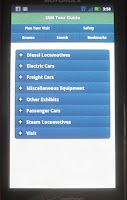
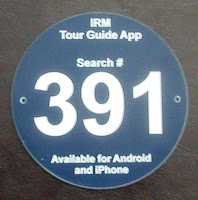
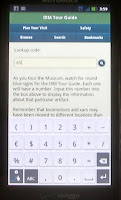
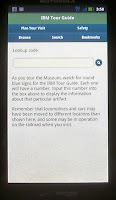
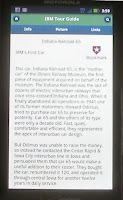
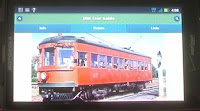 If you press the "Photo" tab at the top, you get a nice picture (R) of the artifact, whenever possible of its use in service.
If you press the "Photo" tab at the top, you get a nice picture (R) of the artifact, whenever possible of its use in service. 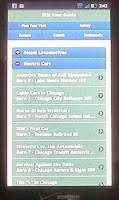
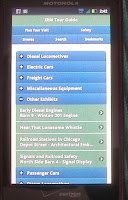
Posted by
Randall Hicks
at
5:40 PM
0
comments
![]()
Labels: IRMA, Permanent Features
